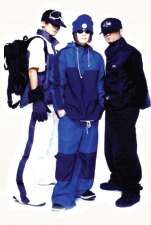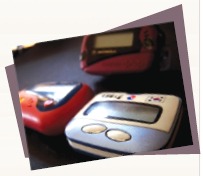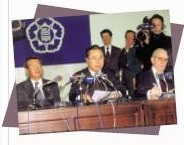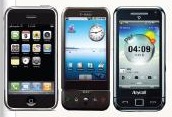
Find the Icon of Era!
We commonly think an icon is a person or thing that represents a specific thing, but this word has many meanings.
Icon
n. 1. (computer science) a graphic symbol that denotes a program or a command or a data file or a concept in a graphical user interface.
2. a visual representation of an object or scene or person or abstraction.
3. a conventional religious painting in oil on a small wooden panel. -www.et-house.com
In a broad sense, icon represents a generation. An age recedes into the dim past and then a new era will come. However, an icon always reflects the times well. Through trying to remember the icon of era, we can apprehend how the era’s culture and social situation were at a glance. How did icons change with stream of eras?
In the 70’s~80’s it was common that cops would carrying rulers to measure the length of men’s hair or women’s mini-skirts. If people nowadays saw this, they would say “What in the world is that for?” But in those days, it was acceptable. Let’s find out the hot icons of those ages that have vanished, only to be just distant memories now.
College Singing Contest

Even in the 80’s, this contest produced many famous songs such as ‘It’s Me,’ ‘Conversation of Dream,’ and ‘Lie on the Sea.’ Besides this, singers like Cho Ha-mun, Yu Yeol and Lee Jeong-seok made a debut through this contest.
School Quiz
The student quiz program was fi rst broadcast on MBC, supported by the Sunkyung Corporation, which is current SK Group. This program was once spotlighted by reappearing in the soap opera ‘Newcomer.’ On this quiz show, five students compete fairly for the first place in week, month and half year. This program was first broadcast on Feb 18th, 1973, and Cha In-tae, Son Seok-hui and Kim Won-tae took part as chairpersons. Since then, the program has been broadcast for 30 years.
The Flag Lowering Ceremony & National Anthem in the Theatre

Also, the oppressive saluting to the country was over, but the traces of the ceremony still remains. A poet, Hwang Ji-woo, described candidly the reality of those days in his poetry.
5.18 Gwangju Pro-democracy Movement

in the 1990's Unlike the icons in the 70’s and 80’s in history, there are many familiar icons from the 1990’s. Icons related to culture have especially affected us up until now. What were icons in the 1990’s?
Icon of Music: ‘Seo Tae-ji and Boys’
The singing group ‘Seo tae-ji and Boys’ debuted in 1992 and disbanded as a team in 1996. But ‘Seo Tae-ji’ came

In particular, Seo Tae-ji was elected as the one and only person in culture among ‘One Hundred People Who hanged South Korea in 50 Years.’ Above this, even main news and major newspapers reported the group’s break-up and retirement in detail. Some sports newspapers reported their stories on the front page for the fi rst 15 days.
Icon of Cutting Edge Machine: Beeper.

The Economic Crisis
The economic crisis was the biggest social issue in the 1990’s. Why did the fi nancial crisis hit Korea? The prevailing opinion was a lack of foreign exchange liquidity. It was said to be a result of various reasons such as the government’s inadequate response, unreasonable expansion of companies, banks’ carelessness and an increasing consumption of foreign luxury goods in public. After rapid development in the 1990’s, the whole country was excited and enjoyed the feelings of success.

However, all the people and the government could solve the problem in harmony. The government provided jobs to the unemployed and people began to reduce consumption of luxury goods. Also, some civil service movements began, such as collecting gold, collecting old clothes for the export movement, handing out sports uniforms, and ahnabada exercise (a conservation movement to conserve, share, change and recycle). Eventually the unity of the people and the government made a splendid result. In 2001, after just four years, Korea repaid all borrowed money to the IMF.
in the 2000's The 2000’s is called the New Millennium and the beginning of the year was very glamorous. What is the millennium? It is based on the Christian era, said from the period of 1000 years. 10 years have passed since the new millennium. From 2000 until now, what has been the best icon?
Smart-Phone
Lately, consumers’ lifestyles and the IT industry were infl uenced by the release of smart-phones with computers’ functions. A smart-phone indicates one is “up-to-the-minute” and “refi ned.” It has become popular among young people in their twenties and thirties. With the popularity of the smart-phone, its applications are also popular. originally, application meant an operating system of all software, but recently it means all software on smartphones. Recently, many practical applications are bringing more convenience to our daily lives.
The 17th World Cup Game & ‘Red Devil’
In the 17th FIFA World Cup, the Korean team fi rst advanced to the semifi nals. As well as the efforts of the players, the 12th player, the ‘Red Devils,’ were worthy of praise.
Throughout all games, the Red Devils enhanced our nation’s position. They embroidered the Korean Peninsula with red color and passionate cheering. Most of all, their sense of public order and service have left a strong image on the minds of people all around the world. Also, the red T-shirts became a fashion item and caused young women to participate in cheering.
As a result, those games could be enjoyed by anyone regardless of age or gender. In addition, Red Devils developed original card sections such as ‘dreams★ is come true’ and received a lot of attention. The Red Devils didn’t form for the 2002 World Cup. They formed in December 1995. At fi rst, this group was tentatively named the ‘Great Korea Supporters Club’. Then they decided to name it after the Red Devils in the 1983 World Youth Soccer Championship in Mexico. It originated from the foreign press. At the time the Korean national team advanced to the semifinals and the foreign press called the Korean national team the ‘Red Furies.’
Social Networking Service: ‘Cyworld’

The Icons of CBNU What are icons to represent our university? Let’s see icons of our school and their meanings and changes.
Logo
The symbol mark is the central factor to symbolize Chonbuk National University. The original shape had a shield-shaped frame, but it was changed to the present shape in 1999. The meaning of the initial mark showed Chonbuk

This mark implies that the university is the basis for great learning. It also looks like the shape of a bird sitting upright to prepare to soar, which was to describe the coming development of CBNU. Nowadays, the pattern ‘U’ has been added to this logo. The background of ‘U’ represents the long authenticity and tradition of CBNU. It originated from the shape of Baekje’s pattern – ‘Baekje’ is the name of ancient nation that was located in Jeonbuk province.
Pattern
The pattern has a role to improve the reputation of the school by appearing on various printed materials and signs. It has three items of tradition, ideal and spirit.
Tradition
It was designed by applying ideas from the jewelry of Baekje. It symbolizes the tradition and authenticity of Chonbuk National University.
Ideal
The U shape which is the motif of the logo suggests progress of the high ideals of Chonbuk National University, aspirations to reach for the sky, and hope for the future of Chonbuk National University.
Spirit
Spirit represents active young men who secure their legitimacy on the tradition and advance forward to the future and ideal.
Symbolic Animal – Leopard
A leopard is smart and brave and doesn’t ever make a mistake. Its characters represent the spirit of Chonbuk National University. Through a survey of 6,000 members of the school and its alumni in 1981, a leopard statue was established in front of school headquarters in 1982.
We’ve examined every era’s icons from the 1970’s till the present. Icons of the 70’s and 80’s were connected with the political situation under the military power while those of the 90’s were connected with customs that infl uenced development of culture. Icons in the 2000’s are connected with IT, thus the so-called IT generation. The country is rapidly changing. Likewise, icons representing certain eras are rapidly changing. If we catch the background of icons and meanings, we can cope actively with the changing. Can you guess the icons of the next era?
Kim Dan-bi
Park Saet-byul
Kim Min-ji reporters

